Watch Ukraine Pull Off an Assault Where Everything Shockingly Goes to Plan
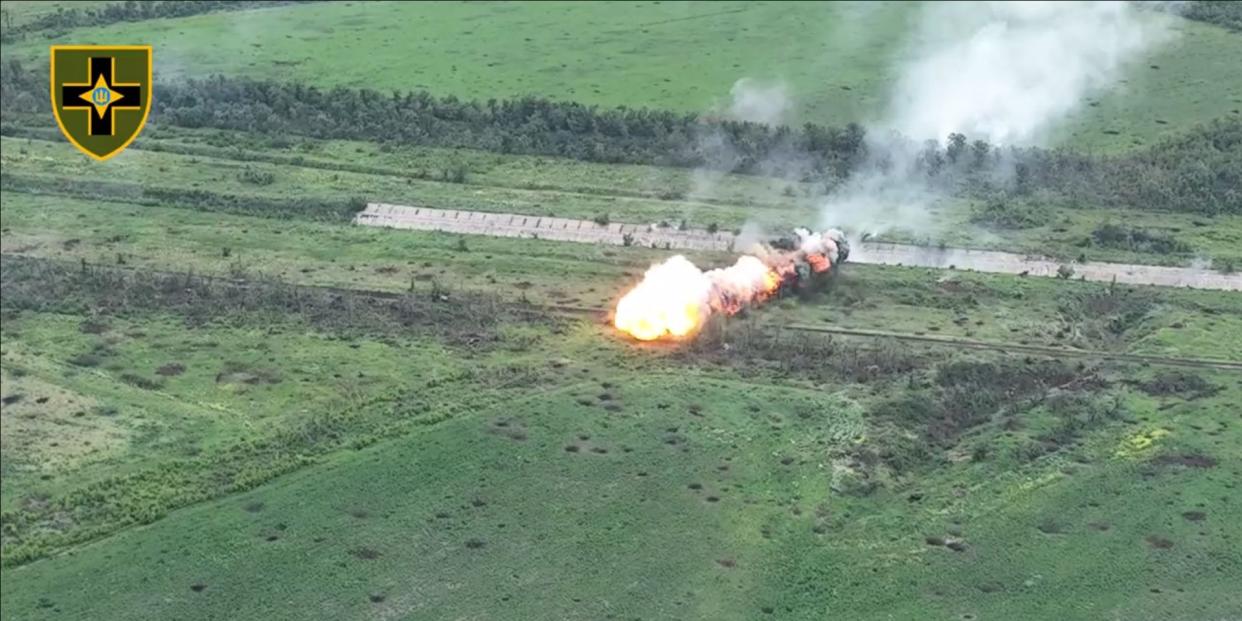
It’s an old adage that no plan survives contact with the enemy. That has certainly been true more often than not over the course of Russia’s calamitous invasion of Ukraine. But the first battalion of Ukraine’s 28th Mechanized Brigade may have achieved the “impossible” in a breach of Russian defenses along a canal near the town of Kurdyumivka on the southern flank of Russian-occupied Bakhmut.
At first glance, the operation—recorded by an overwatching Ukrainian drone—looks like a textbook example of a smaller-scale combined arms breaching operation. At second glance, some aspects appear less than textbook—but seem to work out anyway.
An assault on Russian positions by the 1st mechanized company of the 28th mechanized in the area of Kurdyumivka. Reportedly 35 Russians were killed during this assault. Assault units broke through defensive lines that were prepared for months by Russians.
Great footage. pic.twitter.com/86iXrWO5Ya— NOELREPORTS 🇪🇺 🇺🇦 (@NOELreports) June 27, 2023
The 28th tapped a relatively small force—a platoon of three BMP-2 infantry fighting vehicles, each with up to seven infantry—to advance hundreds of meters eastward across a cratered, but still grassy, field. At the far end, Russian forces were entrenched in a line of trees parallel to an elevated concrete revetment on the western side of the Siversky Donets-Donbas Canal.
Before the assault commenced, a light preparatory mortar or howitzer bombardment could be seen bursting around the revetment itself. Meanwhile, combat engineers shot off a rocket trailing cables full of plastic explosives the length of a football field. These are known as Mine-Clearing Line Charges (MICLICS). Ukraine has received M58 MICLIC systems from the U.S., and inherited Soviet UR-77 Meteorit vehicles that are also equipped to employ MICLICs.
The first rocket arced some distance across the field before the squiggling cables draped down to straddle the forward and rear line of Russian defenses. Their detonation created a fireball and shockwave that, in theory, should have cleared a path through the minefield that could be exploited by advancing armored vehicles. A second rocket arced a shorter distance, clearing an area dozens of meters in front of the forward line of defenses at a slant.
At this point, a platoon of three Soviet-designed BMP-2s vehicle began rolling forward, their rapid-fire 30-millimeter autocannons flashing as they pepped the Russian position with suppressing fire. Though each round is much smaller than artillery or tank shells, these weapons are scary for dismounted infantry—to use an imperfect analogy, they’re like machine guns from which every round explodes like a grenade.
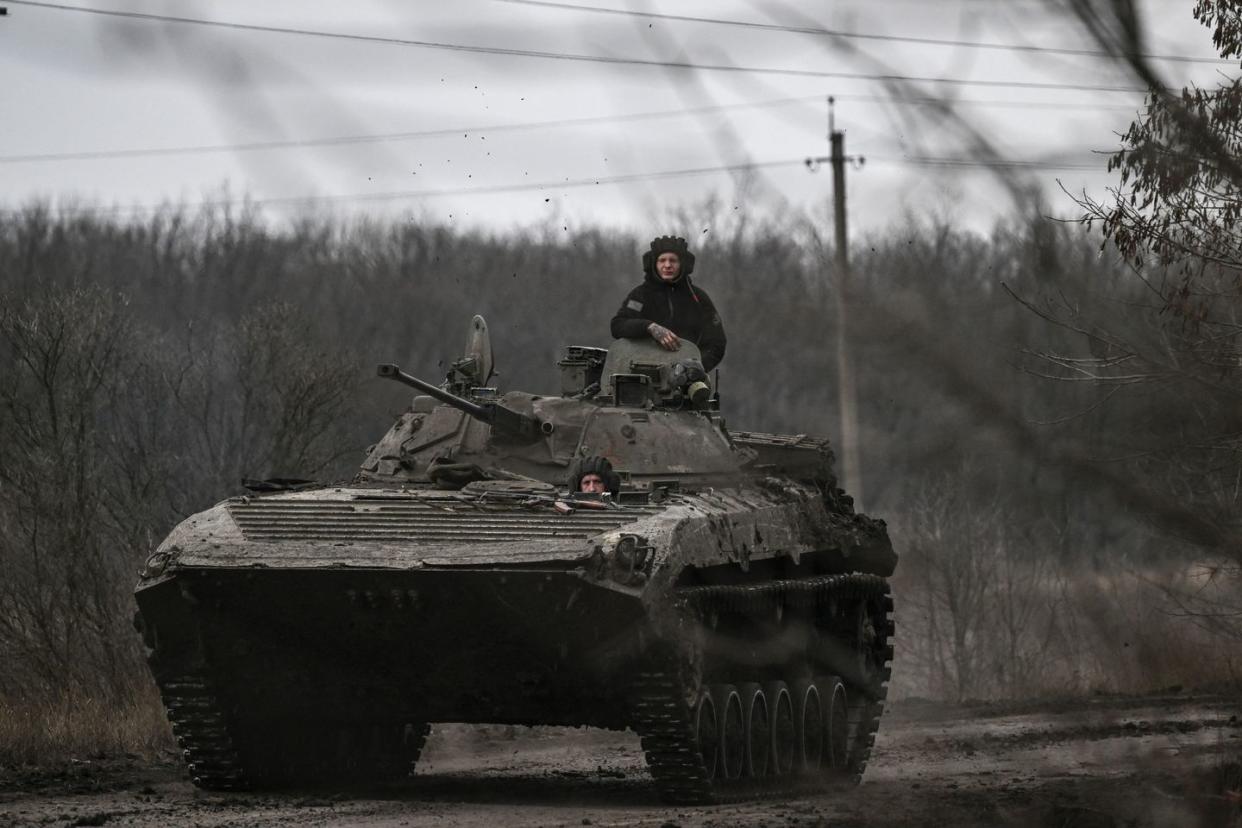
It’s worth noting, though, that the BMP-2s aren’t heavily armored for anything stiffer than machine gun fire. Whether by luck or, hopefully, by good pre-battle reconnaissance aided by drones, they did not end up encountering any longer-distance anti-armor weapons in this area.
The targeted Russian position undoubtedly had some portable rocket-propelled grenades that posed a short-range threat, but suppressing fire seemingly prevented any accurate shots. However, some arcing Russian fire can be seen in return—one bursting in the air close to the observing drone.
The advancing armor wisely stoped short of the Russian trenches, halting to allow infantry to dismount from their rear ramps. Lone scouts could be seen rushing forward, presumably checking for anti-tank mines and ambushers, while the rest of the squad stayed covered behind the vehicles as they continued to dish out covering fire.
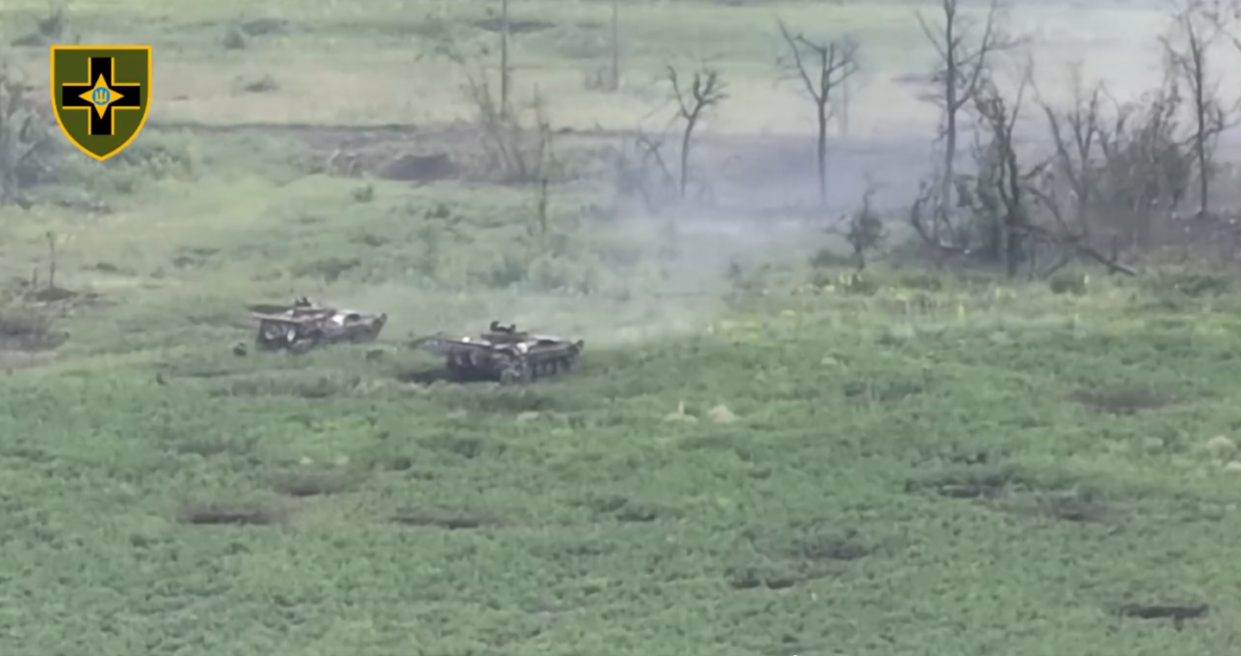
Finally, the infantry began moving forward in a dispersed formation, their rifles spitting suppressing fire as they entered the tree line and began clearing and occupying the Russian trenches.
Meanwhile, the BMP began rolling back to mitigate their exposure to anti-tank ambushes. This contrasts with recordings from earlier battles, in which Ukrainian tanks are seen overrunning Russian trenches—the crew hoping to clear them so as to spare accompanying infantry from harm. While ‘tank shock’ sometimes proves effective, it severely exposes armored vehicles to portable anti-tank weapons.
Russian infantry could be seen fleeing east back up the steep concrete revetment. The 28th Brigade claimed that a total of 40 defenders fled, leaving behind 35 killed and several captured. That implies that the attack dislodged the equivalent of an understrength infantry company.
The Ukrainian brigade subsequently reported that it has secured the entire western bank of the canal itself, and posted a video laying a flag down on the captured position. They indicated the intent to capture the of Kurdyumivka as the next objective, a village with a population of 700-1,000 pre-war.
For the lazy people ;), south of Bakhmut pic.twitter.com/59aOzDPDiq
— RDHT (@RDHT_91) June 27, 2023
The canal amounted to a formidable defensive obstacle, and its breach gives Ukrainian forces an advantageous angle to flank defense not only at Kurdyumivka, but also at Klishchiivka to the north.
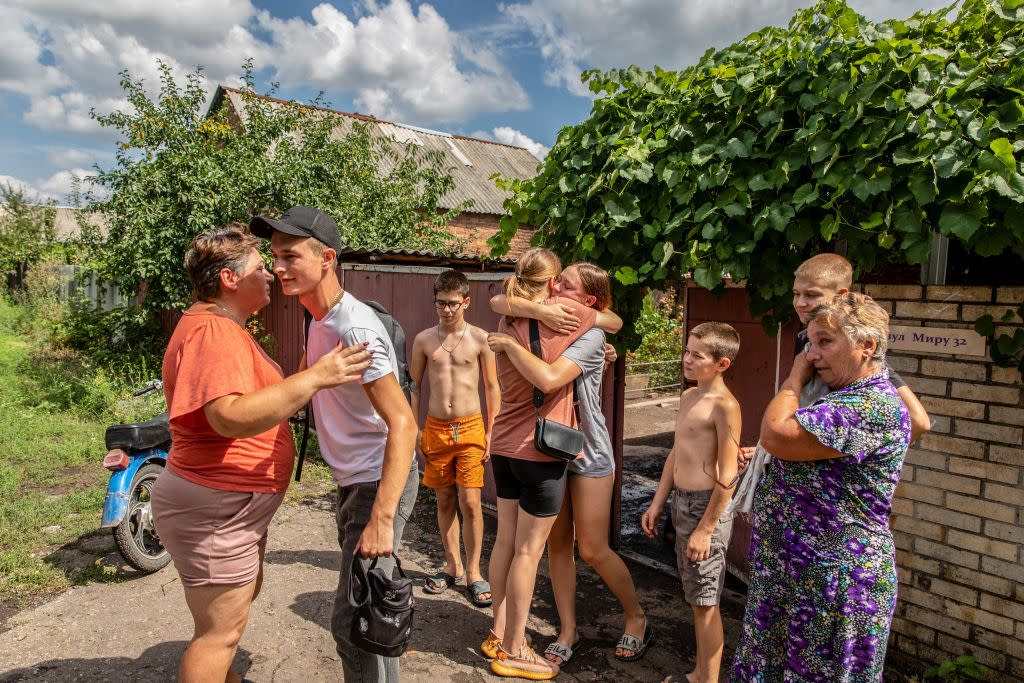
Ukraine’s 3rd Brigade (specifically, its first battalion) secured another stretch of the canal’s west bank near Kurdyumivka in a brutal trench assault recorded on video here, giving an idea of the very close-quarters nature of such infantry battles and the advantages offered by overwatching drones that can sound the alarm when an enemy is literally just around the corner.
A textbook Breaching Operation?
Some observers have subsequently suggested that the 28th Brigade’s assault wasn’t as textbook as it seems. Though it shows the brigade using the right assets in the right order, they believe the assets weren’t used in the prescribed manner.
In particular, the two MICLIC rockets were not launched in alignment with each other to create a continuous lane, and it’s unclear whether the Ukrainian BMPs roll over the lanes cleared by those rockets. That may indicate that the MICLICs were primarily used as an improvised anti-fortification weapon against the Russian position, rather than primarily for mine clearing. A lack of secondary explosions might indicate that there weren’t any mines in need of clearing.
Another critique points out that an ideal combined arms breaching operation would involve multiple mine-clearing tanks with plows and chain rollers, such as various vehicles (Bergepanzer 2 and 3 and Leopard 2R, based on the Leopard 1 and 2 tanks) supplied by Ukraine’s allies. A heavier operation might also have cannon-armed tanks for fire support.
Combat engineering tanks remain relatively rare and valuable, however, and this was obviously a small-scale operation aimed at achieving a short hop, not a deep penetrating breakthrough.
This assault contrasts with a notorious failed combined arms breach near Mala Tomachka earlier in June. During this attempted breach, Ukraine suffered heavy losses of Western-supplied armor in an attempt at an ambitious breakthrough, despite correctly using of mine-clearing tanks. Some analysts argue that the attack wasn’t so much using the wrong tactics as it was unlucky tackling a very tough target.
The force near Kurdyumivka was much smaller and possessed fewer capabilities, but was appropriately sized for the degree of resistance its target could offer—allowing the assault to evolve as planned.
The Bigger Picture Around Bakhmut
Nearby Bakhmut—now a demolished and depopulated ruin—was finally seized by Russian mercenaries late in May after a nine-month battle. The battle is estimated to have killed and wounded tens of thousands of Russians and Ukrainians, and some estimates put at as high as 5:1 (or even higher), though it likely worsened for Ukraine later in the battle.
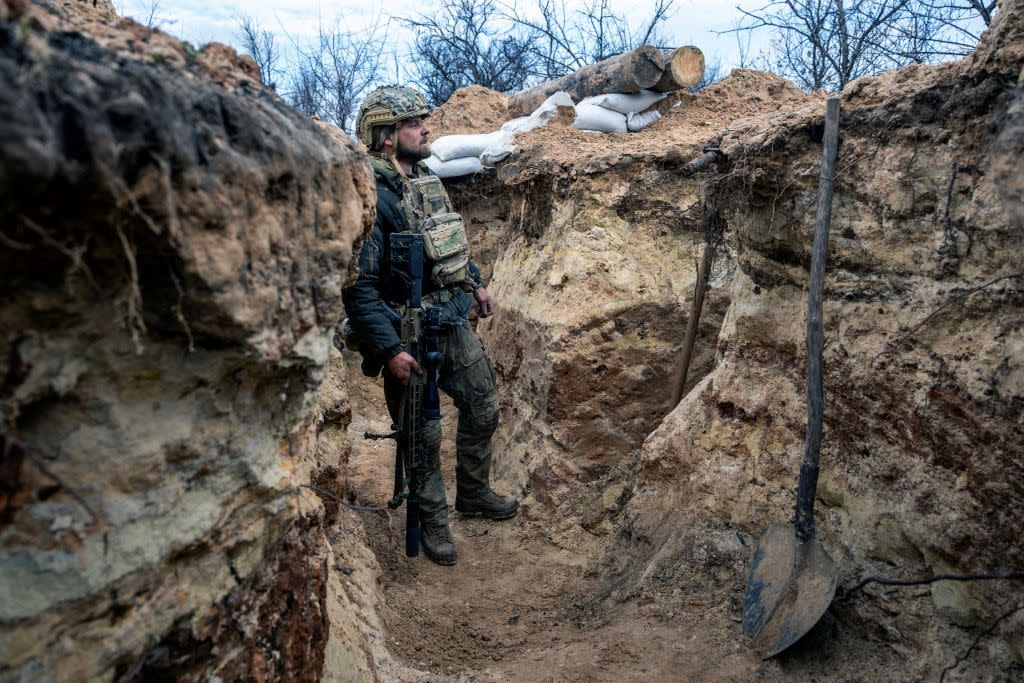
Ukraine’s recent attacks on Bakhmut’s flanks are thought by many to be a pinning/diversionary operation from Ukraine’s main counter offensive targets in southern Ukraine. But there’s no telling how far or hard Ukraine could end up pushing there, particularly if Russia fails to adequately respond to those attacks out of a conviction that they’re a diversion.
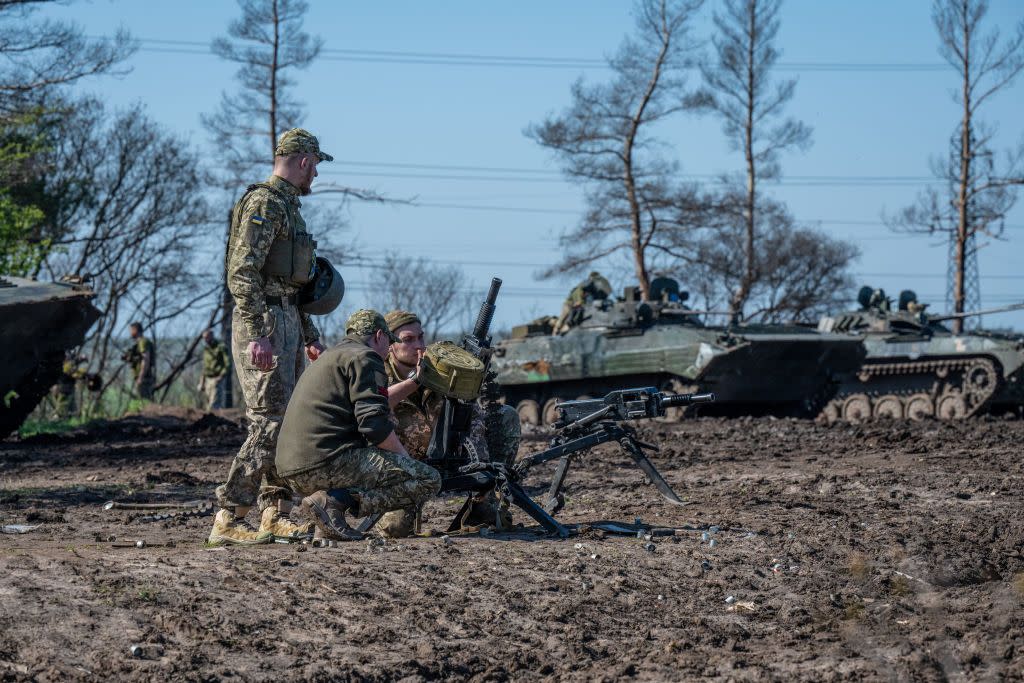
The brigade’s successes near Kurdyumivka should not obscure the huge suffering and losses the war has exacted upon the region.
The 28th Mechanized Brigade—which goes by the honorary title ‘Knights of the Winter Campaign’ after anti-Soviet Ukrainian rebels in 1919-1920—was based around the southwestern port of Odesa, which came under heavy attack by invading Russian troops from Crimea. Though rocket artillery killed the brigade’s commander, Col. Vitaliy Huliayev near Mykolaiv, in July, the unit first helped halt the Russian drive and participated in driving out the Russian foothold in southwestern Ukraine. It was pushed out entirely by November.
The unit was almost immediately redeployed without replenishment to stave near-suicidal waves of Wagner convict soldiers assaulting Bakhmut. In particular, it was charged with defending settlements on the besieged city’s southern flank. A profile of one of the 28th brigade’s battalions by New Yorker war correspondent Luke Mogelson reported that the unit suffered the loss of multiple entire platoons and that, by May, it was made up of 80% fresh draftees.

Such accounts drive home the terrible costs paid by the the forces still resisting Russia’s unprovoked invasion.
You Might Also Like
